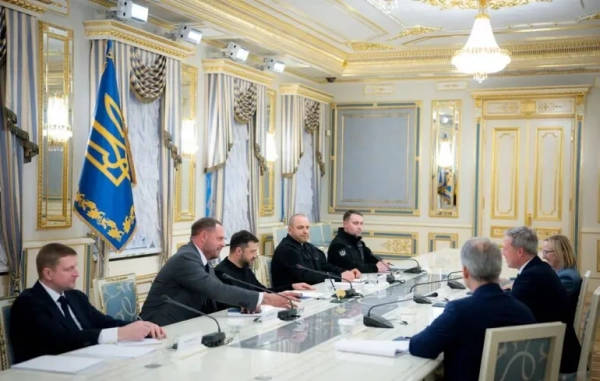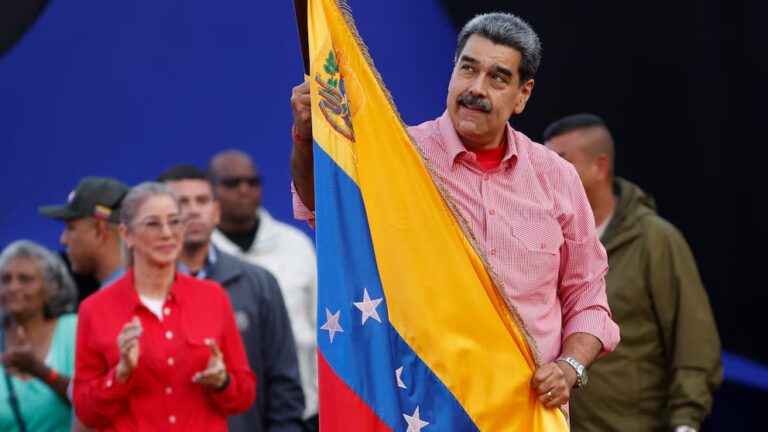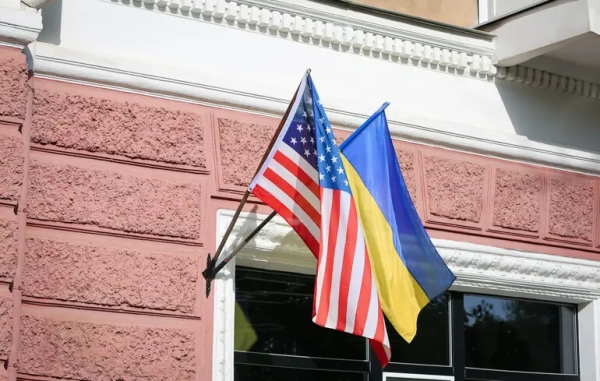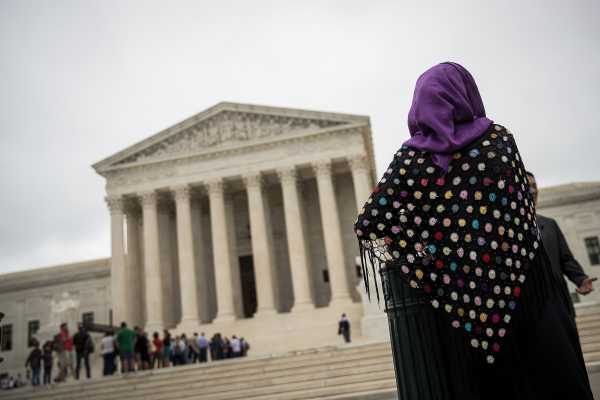 might make Trump’s travel ban permanent” alt=”The Supreme Court might make Trump’s travel ban permanent” />
might make Trump’s travel ban permanent” alt=”The Supreme Court might make Trump’s travel ban permanent” />
On Wednesday, the Supreme Court will take up the travel ban again.
But in the year since the Court first examined the Trump administration’s efforts to bar people from certain countries, most of them majority-Muslim, from entering the US, the ban and the landscape both look very different.
We’re now on the third version of Trump’s travel ban — the first was scuttled after it got thwarted by lower courts, and the second, allowed to go partially into effect by the Supreme Court last year, expired in September. The current version, which prevents some (or all) immigrants, refugees, and visa holders from Iran, Libya, North Korea, Somalia, Syria, Venezuela, and Yemen from entering the US, is designed to be permanent. The travel ban has been in effect in full since early December.
The Ninth Circuit Court of Appeals had ruled against the current version of the ban (as it applies to the majority-Muslim countries) last November, but that ruling was put on hold by the Supreme Court until it had examined the case. Unless the Supreme Court acts to stop it, the ban will remain in effect indefinitely.
The widespread outrage and massive airport protests of the administration’s first attempt at a travel ban back in January 2017 are long gone. In most respects, the current version of the ban, at this point, looks like a normal policy put in place by a normal president.
In the eyes of the Trump administration’s critics, of course, that’s exactly the wrong way to look at the travel ban. They believe it’s obvious that this is just another attempt to satisfy Trump’s 2015 campaign promise of a “total and complete shutdown” of Muslims entering the United States. And they see every evolution the ban has undergone since then, as a campaign proposal and then a presidential policy, as coat after coat of whitewash: putting a veneer of legality over a patently discriminatory idea.
A year ago, the Supreme Court reversed a tide of defeats for the Trump administration by allowing an earlier version of the ban to go into effect in part. Now, it has the chance to hand the president his final victory — if the Court thinks he deserves it.
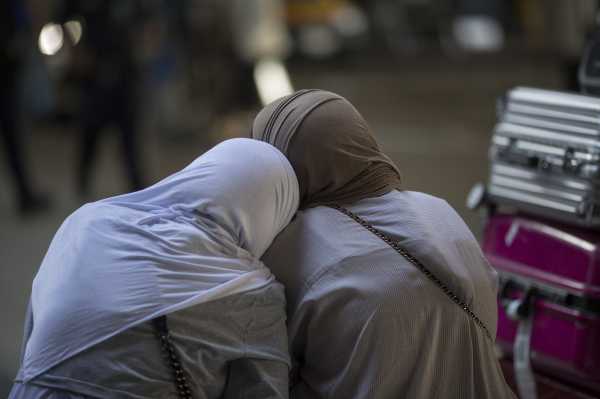
The travel ban court battle has slowly turned in Trump’s favor
It’s been easy to get lost in the thicket of court cases around the travel ban. For one thing, there have been three different iterations of the ban. Additionally, there have been cases in two different circuits — the Fourth Circuit on the East Coast and the Ninth Circuit on the West Coast.
Most importantly, no lawsuit has gotten to the point of ruling on the legality or constitutionality of the ban itself. Instead, judges have been issuing preliminary injunctions to prevent the ban from going into effect while the case is pending, then having those injunctions upheld or stayed on appeal.
The best way to understand all this back-and-forth is to look at what policies the Trump administration has actually been allowed to put in place. From that perspective, the travel ban saga breaks down pretty easily into four distinct periods.
A full ban for seven countries and all refugees: January 28, 2017, to February 3, 2017. On January 27, 2017, Trump signed the first travel ban executive order, banning all people from Iran, Iraq, Libya, Somalia, Syria, Sudan, and Yemen for 90 days and nearly all refugees for 120 days. It went into effect (with little preparation or input from within the government) several hours later. This was the period of massive airport chaos and giant spontaneous protests, as the Trump administration struggled to figure out how to implement the ban as it went along.
No ban: February 3, 2017, to June 27, 2017. On February 3, a federal judge in Washington state issued a preliminary injunction to stop enforcement of the ban while he weighed the merits of the case. The 9inth Circuit Court of Appeals upheld his ruling the next week.
The Trump administration, all but admitting defeat (even as they protested that the ban was still legal), quietly moved to write a new executive order to replace the old one. That order, which dropped Iraq off the list of banned countries, was signed on March 6, 2017; its 90-day country-based ban and 120-day refugee ban were set to go into effect March 16, 2017.
But on the eve of its enactment, judges in Hawaii and Maryland ruled that it should be put on hold too, because it hadn’t done enough to assuage the legal and constitutional concerns that the first version raised. Those holds were kept in place by the Ninth Circuit Court of Appeals and the Fourth Circuit Court of Appeals and ultimately appealed to the Supreme Court.
A ban — but only for people who lack a “bona fide relationship” to the United States: June 27, 2017, to October 17, 2017; November 13, 2017, to December 4, 2017. The Supreme Court partly overruled lower courts in June 2017. It let the government start implementing the second version of the travel ban — but exempted anyone who had a “bona fide relationship” with a person or business in the United States. (In practice, this meant that most visa applicants from the countries named in the ban were allowed to enter, but most refugees were blocked.)
In September, with the 90-day country ban about to expire, the Trump administration rolled out a third iteration of the policy: an indefinite ban on some or all people trying to come to the US from Chad, Iran, Libya, North Korea, Somalia, Syria, Venezuela, and Yemen. Which categories of people were banned varied by country: for some countries (like Syria) the ban applied to all would-be immigrants and visa holders, while for others (like Somalia) it only banned people seeking to immigrate to the US for good.
Initially, the third version of the travel ban was blocked completely (at least for the majority-Muslim countries) by a judge on the eve of its enactment. In November, the Ninth Circuit (and the Fourth) decided to treat it the same way the Supreme Court had treated the second ban: to allow it to go into effect but to exempt people who had bona fide relationships in the US. (The bans on people from Venezuela and North Korea have been allowed to go into effect as planned.)
A full ban for several countries: December 4, 2017, to ??? In December, the Supreme Court ruled that the ban could go into effect in its entirety — with no automatic exemption for people with a “bona fide relationship” — until the Court itself got a chance to more fully consider the third version.
Since early December, the US has blocked an unknown number of people from Chad, Iran, Libya, North Korea, Syria, Somalia, Yemen, and Venezuela from entering the US. (It dropped Chad from the list in March.) Individuals from banned countries are theoretically eligible for waivers, but in practice, waivers are few and far between. After one month of the full ban, according to a Reuters report, 8,400 people had applied for waivers; after three months, about 100 waivers had been granted.
The Supreme Court can kick the can down the road on the travel ban one last time, by ruling on the preliminary injunctions but letting the lower court cases play out afterward. But it could just as easily rule directly on the legality and constitutionality of the travel ban once and for all.
And because this version of the travel ban is written to last indefinitely — with review by the executive branch but not Congress or the courts — if the Court sides with Trump in this case, the travel ban will probably be around for as long as Trump is in office or longer.
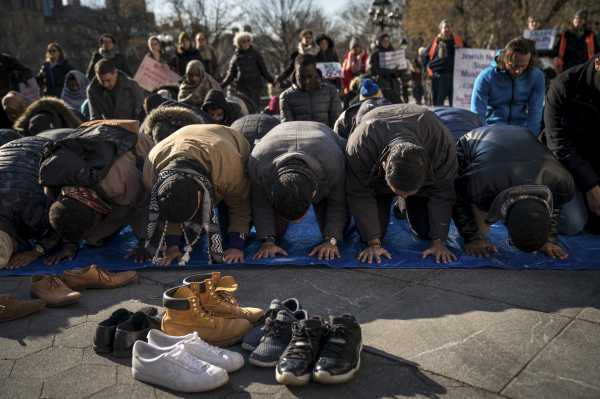
This isn’t the travel ban you remember from the airport protests of 2017
It’s not a coincidence that the Trump administration has been more successful in court with each successive version of the ban. Each ruling against the first version of the ban was, in a way, a guide to what to avoid in the second; each ruling against the second offered tips for what to avoid in the third.
The list of countries whose nationals are currently banned from entering the US was determined, the government claims, after an interagency review of three things: whether IDs issued by the government met security standards; whether the government shared enough data with the US on suspected terrorists and safety threats; and whether the country was generally safe enough for the US to trust the people it sent. (Each of these broad factors was broken down into separate subfactors to check.)
Countries can be removed from the list if they demonstrate improvement (like Chad). Countries can, theoretically, be added. And individual waivers are theoretically available.
This policy has been in place for months, with very little public outcry. It’s hard to deny that the Trump administration enters the Supreme Court on stronger footing with the ban than it ever has before. There’s just one problem: Donald Trump.
The best argument against the travel ban’s legality is Donald Trump’s tweets
Whenever the courts decide whether a policy is unconstitutionally prejudiced or discriminatory, there’s a meta-question of what a judge is allowed to consider when making that decision: whether she’s confined to the “four corners” of the policy as written, or allowed to “look behind” it to its history and the rhetoric of its supporters and critics.
Normally, that’s a really difficult question — especially in areas, like immigration, where precedent says the courts need to defer to the executive branch. But normally, the chief executive didn’t make an explicit campaign promise to discriminate based on religion and characterize his first version of the ban as doing just that. Looking at Trump’s statements and tweets isn’t necessarily “looking behind” the policy — they’re right there in the open.
As much as the Trump administration has worked to differentiate each version of the travel ban, the president himself has kind of undermined its case. When the second version of the ban was struggling in court, he complained that he never should have changed the first one. When his administration challenged the use of “ban” to describe the 90-day pause, he proudly called it a ban.
That makes it very easy to see the third version of the travel ban as a descendant of the second and first. Indeed, it certainly seems curious that the interagency review ended up singling out almost the exact same countries that the Trump administration chose after only a few days in office, and that one of those countries — Somalia — actually passed the test but was added to the ban anyway because of general terrorism concerns.
But the genealogy goes further: from the travel bans Trump has signed in office to his promise on the campaign trail in summer 2016 to ban people from countries with a “proven history of terrorism against the United States or our allies” — and from there backward to the December 2015 statement that promised “a total and complete shutdown” of Muslims entering the United States.
The whole point of changing the “Muslim ban” to a ban on immigrants from specific countries was to make it more constitutionally defensible. But just as the policy language used to describe the ban changed, the president and his allies kept signaling that this was the same policy in different clothing — at one point admitting that this was the Muslim ban made legal.
The establishment clause of the Constitution doesn’t let people off the hook if they don’t explicitly mention religion. But the court doesn’t, as a matter of course, take campaign rhetoric into account when evaluating the constitutionality of a policy. Trump’s defenders are right that doing so in this case could set a radical precedent. But the Supreme Court, as the Washington Post’s Robert Barnes notes, may be torn between what it would do for a normal president — give him the benefit of the doubt — and the plain fact that this president has not shown he’s capable of handling it.
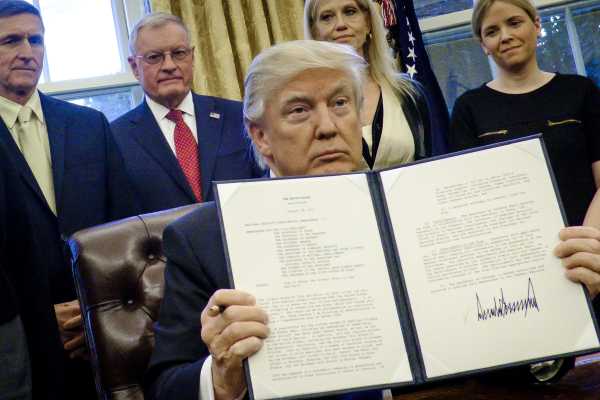
The four questions the Supreme Court is trying to answer about the travel ban
When the Supreme Court agrees to take a case, it sets out questions for each side to answer in their briefs. Wednesday’s oral argument won’t follow this structure, and it might not even address all of these questions, but this is how the justices will have to approach the case when they’re writing their opinions.
1) Can a court even rule on this policy?
The Trump administration argues that it shouldn’t even be in court defending the travel ban because it’s not something courts are allowed to litigate. That’s not as authoritarian as it might sound: There are specific rules for who is allowed to challenge the constitutionality of a policy and when they can do it.
Indeed, as a general rule, people aren’t allowed to sue the government over visa denials at all. The government argues that rule applies to this case. The critics argue it’s an exception.
Even when the Supreme Court has made exceptions and examined government visa decisions, though, it’s said they can only be reviewed if the government can’t offer a “facially legitimate and bona fide” reason for the decision it made.
The Trump administration says that its concerns about security are a facially legitimate and bona fide reason; both appeals courts have strongly disagreed. But where you fall on this, of course, depends on whether you think the current version of the travel ban is a policy that should be seen on its own or as the latest iteration of a proposal first floated in December 2015.
2) Is the travel ban legal?
Section 1182(f) of the US Code (passed as part of the Immigration and Nationality Act) gives the executive branch the authority to suspend the entry of a class of aliens if the executive “finds that the entry of any aliens or of any class of aliens into the United States would be detrimental to the interests of the United States.”
From the Trump administration’s perspective, that’s exactly what they’ve done with the travel ban.
The critics, and lower courts, think it’s not that simple. In particular, they point to a later addition to the Immigration and Nationality Act — section 1152(a)(1)(A) — that prohibits the government from discriminating in immigration law on the basis of several traits, including nationality. The question of which clause trumps the other is central to the legality argument.
Lower courts have offered up plenty of other reasons why the travel ban isn’t actually a legitimate use of the power to suspend entry: It’s too broad and too indefinite; it is supposed to be reserved for emergencies; the bar for “finding” that a group’s entry would undermine security is higher than just saying that it would.
If the Supreme Court agrees with any of these, it doesn’t need to get to the constitutional question to put the ban back on hold. But any argument based on illegality under the Immigration and Nationality Act is just going to allow the government to try a fourth time.
3) Is the travel ban constitutional?
Because the travel ban is still referred to by its critics (and occasionally by its supporters) as a “Muslim ban,” it might sound like an obvious violation of the First Amendment’s guarantee of free expression of religion and its ban on the establishment of a state religion. Legally speaking, though, it is much more complicated.
For one thing, this question comes back to the “facially legitimate and bona fide” standard — the government argues that since it has offered a national security rationale for the ban, the courts don’t have the power to scrutinize the policy’s constitutionality.
But the reason Trump’s critics think the ban isn’t facially legitimate and bona fide is the same reason they think it violates the establishment clause to begin with: They believe that even though the ban doesn’t explicitly target Muslims and even though it now includes two non-Muslim countries, it was motivated by anti-Muslim animus and therefore is unconstitutional.
4) Can one judge put the ban on hold everywhere?
Even if the Supreme Court decides that the ban is illegal and/or unconstitutional, it still might chide the Ninth Circuit for putting it on hold everywhere, rather than just within the states governed by the Ninth Circuit itself.
There’s a growing concern among some legal scholars, particularly on the right, about the growing use of nationwide injunctions by federal judges asked to rule on the legality of federal programs. Because preliminary injunctions aren’t as thorough as final rulings, it seems like a lot of power to grant one judge in Hawaii or Washington (or Texas) the ability to control federal policy in all 50 states.
Even if the Supreme Court is wary of nationwide injunctions in general, though, it might not choose this case to make a stand. Immigration is notoriously a federal issue, and it’s really hard to argue that people from specific countries can be banned from entering the US via certain states but not others.
We won’t get a ruling until June, but assume the administration has the upper hand
Wednesday’s oral arguments might give the public a few hints about what legal angles the Court finds most important. But Supreme Court oral arguments are a notoriously bad guide to how the court will actually vote in the end.
The only way to know that is to wait until the Court issues its ruling in the case, which will almost certainly be during its last week of the session — the last week in June.
In a way, though, the Court has already tipped its hand. As conservative law professor Josh Blackman of South Texas College of Law has noted, when the Roberts Court has stopped a lower court’s injunction from going into effect — as it did here with the Ninth Circuit — it’s ended up overturning the injunction in every case but one.
Throughout the travel ban cases, the Supreme Court has been a little more deferential to the administration than lower courts. While it’s by no means a sure thing that the Court’s four conservative justices and occasional swing vote Anthony Kennedy will all side with the Trump administration, there certainly isn’t much visible evidence they’ll side against it.
But while the Supreme Court frequently makes its decisions along obvious ideological lines, it often does not. The question facing the Court right now is which of the stakes it’s most worried about: the legality of the policy as it’s written; the precedent of extending the court’s jurisdiction over immigration; or the prospect of endorsing the signature policy of Donald J. Trump.
Sourse: vox.com
